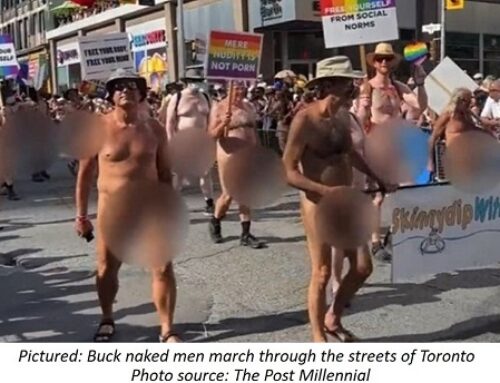 Vampires are back. Not that they ever went away, but they’ve been given a pop culture revival that strives to make them even more appealing than ever before. For tweens, there are the painfully attractive, but misunderstood, nightwalking misfits of Twilight, the Stephenie Meyer novel that was recently adapted into the first of a series of films, and for adults, there are the infighting and oversexed bloodsuckers of True Blood, the HBO television series from Six Foot Under creator Alan Ball, which just began its second season.
Vampires are back. Not that they ever went away, but they’ve been given a pop culture revival that strives to make them even more appealing than ever before. For tweens, there are the painfully attractive, but misunderstood, nightwalking misfits of Twilight, the Stephenie Meyer novel that was recently adapted into the first of a series of films, and for adults, there are the infighting and oversexed bloodsuckers of True Blood, the HBO television series from Six Foot Under creator Alan Ball, which just began its second season.
The appeal of vampire stories is probably eternal; virtually every culture has its primal myths of night creatures who prey on the living, though explicit undead status is optional. The vampire made his debut on the pop culture stage during the first golden age of trash fiction in the Victorian era and codified himself quickly with the publication of Bram Stoker’s melodramatic horror novel Dracula, transforming a ruthless Romanian medieval despot forevermore from a footnote into a suave demon.
The movies refined Dracula at generational intervals, as the rodent-like vampire of F. W. Murnau’s silent classic Nosferatu became the lugubrious Ruritanian played by Bela Lugosi in Tod Browning’s 1931 Dracula. Britain’s Hammer studios gave us Christopher Lee’s darkly alluring Count in the 60s, which was buffed to a sheen in the permed aftermath of the so-called “sexual revolution” with Frank Langella’s turn in the role in 1979’s Dracula.
Both Twilight and True Blood dispense with the European Gothic cliches of Stoker and Hammer by setting their vampires squarely in red state Americana, in a world of high schools and roadhouse bars, of TV, tabloids, cable news and a general public whose sexuality is either jaded or enervated when it isn’t nascent. Both stories begin with the same basic premise: oddball local girl meets troubled, but soulful, new boy in town, but while Twilight uses vampires to embroider a by-now-threadbare metaphor about teenage angst – imagine Rebel Without A Soul – True Blood is far more ambitious.
There’s nothing in Twilight that wasn’t addressed just as well – and far more humourously – in I Was A Teenage Werewolf, a three-minute 1980 song by punk legends The Cramps. Based on a series of novels by Charlaine Harris, True Blood tips its hat early on by eliminating the secrecy and mystical subterfuge that separated humans and vampires and setting its boy-meets-girl tale in a world where vampires have gone mainstream and, in a significant phrase, “come out of the coffin.”
When Bill Compton (Stephen Moyer) walks into the Louisiana bar where Sookie Stackhouse (Anna Paquin) works as a waitress, he orders a bottle of True Blood, the Japanese-made synthetic blood that’s made it possible for vampires to make themselves known, complete with lobby groups and sympathetic legislators and a public at least partially primed to accept them out of an apparent fear of seeming bigoted or narrow-minded. After all, most of them didn’t choose their lifestyle and, so long as it’s all between consenting adults, what’s the problem?
True Blood shares a locale with Anne Rice’s bestselling vampire novels, but little else; Ball’s Renard parish is standard issue South – a place shot through with violence and superstition, stoked by the ecstasies of evangelical Protestantism and still fingering the scars of the civil rights battles of the 50s and 60s. Thanks to Sookie’s gift of telepathy, we also know it’s populated by sexual hysterics, which is bad news since a black market trade is growing in vampire blood, which has an effect on humans somewhere between Viagra, Oxycontin and magic mushrooms.
For True Blood to work, everyone has to obey their worst impulses – everyone except Bill, the noble vampire who charms the locals by revealing himself to be a Confederate veteran, during the same icebreaker where he admits that holy water and crucifixes have no effect on vampires (a bit of useful disinformation, he says), that garlic is merely a mild irritant, but that wooden stakes and sunlight work pretty much as advertised.
Bill is a decent man fallen into bad company, who merely wants to settle down and exchange bodily fluids the way nature intended. Like any successful melodrama, True Blood requires that everybody except the hero and heroine be either a villain or a potential obstacle to their happiness. Predictably, by the end of the first season, his relationship with Sookie is set in the context of the first legally recognized human-vampire marriages, tellingly legitimized in Massachusetts.
Whenever the storyline flags, Ball can be relied upon to reach for the overarching metaphor in which True Blood is set, cleverly summarized by a three-word slogan glimpsed on a roadside sign during the opening credits: “God hates fangs.” Thus Fred Phelps and his abhorrent Westboro Baptist Church is meant to (predictably) stand in for the whole of Christianity.
It’s inconvenient, however, that the show also shows Bill to be in conflict with his fellow vampires, a cruel and cynical lot who disdain the mainstreaming of their lifestyle, regard humans as livestock and happily prey on the innocent to swell their ranks. Considering the care with which Ball constructed True Blood’s world, you can’t help but marvel at how poorly he’s thought out its metaphorical setting.




